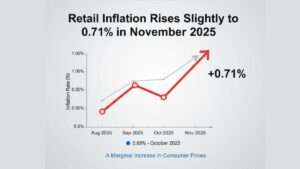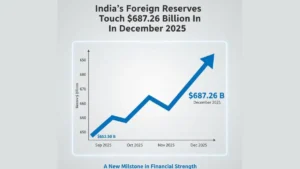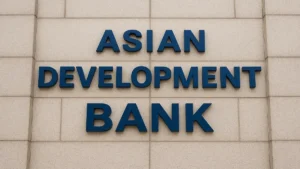India has achieved a significant milestone as Foreign Direct Investment (FDI) inflows surpass $1 trillion between April 2000 and September 2024, reinforcing its position as a top investment destination. With cumulative FDI reaching $1,033.4 billion, including equity, reinvested earnings, and other capital, the country has seen substantial growth, especially post-2014. This surge in investment is a result of favorable government policies, strong economic performance, and key sectors such as services, software, telecommunications, and manufacturing.
Key Sources of FDI: Mauritius, Singapore, and the US
About 25% of India’s FDI inflows came via Mauritius, followed by Singapore (24%) and the US (10%). Other notable investors include the Netherlands, Japan, the UK, and the UAE. The sectors attracting the most investment include services, computer software and hardware, telecommunications, trading, construction, automobile, chemicals, and pharmaceuticals.
Surge Post-2014: A 119% Increase
Since 2014, India has attracted $667.4 billion in FDI, marking a 119% rise from the previous decade (2004-14). The manufacturing sector alone saw $165.1 billion in equity inflows during this period, reflecting a 69% increase compared to the earlier decade.
Government Reforms and Future Outlook
The government’s continuous review of FDI policies and structural reforms, especially in M&A and digital ecosystems, has played a critical role in driving inflows. Experts predict that FDI will continue to grow in 2025, driven by strong macroeconomic fundamentals, improved industrial output, and attractive initiatives like the Production-Linked Incentive (PLI) schemes.
Geopolitical Challenges and Policy Changes
Despite geopolitical uncertainties and potential policy shifts in major economies, experts expect FDI to remain robust, particularly in the tech sector. However, trade regulations and changing global dynamics may keep capital flows volatile. The government’s focus on infrastructure development, workforce skilling, and R&D will be crucial in maintaining investor confidence and ensuring long-term growth.
Summary of the news
| Why in News | Key Points |
|---|---|
| FDI Inflows Cross $1 Trillion into India (April 2000 – September 2024) | – India’s FDI inflows reached $1.033 trillion. |
| – Major investors: Mauritius (25%), Singapore (24%), US (10%), Netherlands (7%), Japan (6%), UK (5%), UAE (3%). | |
| – Key sectors: Services, Software & Hardware, Telecommunications, Trading, Construction, Automobile, Chemicals, Pharmaceuticals. | |
| – 119% increase in FDI inflows from 2014-2024 compared to 2004-2014. | |
| – Manufacturing sector received $165.1 billion in FDI from 2014-2024 (69% increase). | |
| – Government continues reviewing FDI policies and making adjustments to ensure India remains attractive to investors. | |
| FDI Policy | – Automatic route for most sectors, government approval required for telecom, media, pharmaceuticals, insurance. |
| – FDI prohibited in sectors like lottery, gambling, chit funds, Nidhi company, real estate business, tobacco manufacturing. | |
| Top Investor Countries | – Mauritius: $177.18 billion, Singapore: $167.47 billion, US: $67.8 billion. |
| Indian Government’s Measures | – PLI schemes and structural reforms to continue attracting foreign investment. |
| – Government focus on infrastructure development, workforce skilling, and digital ecosystem to sustain FDI growth. | |
| FDI in Manufacturing | – FDI in manufacturing grew by 69% from 2004-2014 to 2014-2024, reaching $165.1 billion. |
| Global FDI Trends and Outlook | – FDI likely to continue growing, driven by India’s macroeconomic performance, geopolitical stability, and investor-friendly policies. |



 Retail Inflation Rises Slightly to 0.71%...
Retail Inflation Rises Slightly to 0.71%...
 India’s Foreign Reserves Touch $687.26 B...
India’s Foreign Reserves Touch $687.26 B...
 ADB Raises India’s Growth Forecast to 7....
ADB Raises India’s Growth Forecast to 7....







